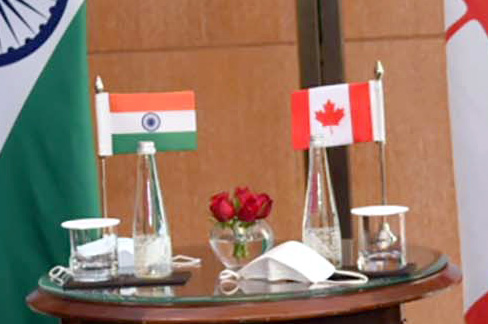India has once again drawn global attention as the International Monetary Fund (IMF) revised its growth forecast for the country’s economy to 6.6 percent for fiscal year 2025-26 (FY 26). Reuters+2Fortune India+2
This upgrade reflects the strong carry-over from first-quarter momentum, reviving confidence even as the country faces elevated U.S. tariffs and external headwinds.
What changed and why
According to the IMF’s latest update, India’s growth outlook was lifted by 0.2 percentage points from 6.4 percent earlier, citing robust private consumption, rapid services expansion and a resilient domestic economy. Outlook Business+1
“In India, growth is projected to be 6.6 percent in 2025 and 6.2 percent in 2026. … A strong carry-over from a resilient first quarter more than offset the increase in U.S. tariffs on imports from India.” — IMF report. Fortune India+1
However, while the near-term forecast was upgraded, the IMF trimmed the following year’s outlook to 6.2 percent for FY 27, reflecting the lingering risks from trade policy, global demand slowdown and external uncertainty. Outlook Business+1
Why this matters
For policy-makers, investors and businesses, this development brings several key points to consider:
Strong domestic engine: The upgrade signals that India’s growth is being driven by internal factors — consumption rebound (especially rural), services sector strength and government investment — rather than just external demand.
Buffer against export shocks: Though India is facing higher U.S. tariffs and global trade headwinds, the domestic demand momentum appears to be cushioning the impact.
Strategic reassurance: A higher growth forecast improves investor and business confidence — giving government and industry more room to invest, hire and expand.
Medium-term caution: The downward revision for FY 27 is a reminder that while the short term looks promising, growth is not guaranteed to accelerate indefinitely — vigilance is necessary.
On-the-ground implications
For businesses and investors:
Companies in consumer goods, services, infrastructure and urban/rural consumer markets should see this as a favorable environment. With growth expected higher than earlier estimates, demand–led sectors may benefit.
For policy–makers: The government has more leeway to pursue structural reforms, infrastructure investment and job-creation programmes without immediate overheating fears.
For individuals: A strong economy often translates into better job prospects, higher incomes and improved living-standards — though that may depend on how equitably growth spreads.
Quotes that resonate
“The upward revision to 6.6 percent underscores India’s unique position as one of the few large economies growing strongly even amid global trade stress.”
“Domestic consumption — particularly in rural India — continues to surprise on the upside, offsetting export weakness.”
“The downward revision for next year highlights that growth is not a given; trade policy, external demand and investment flows must be watched carefully.”
What to watch going forward
Will private investment pick up sufficiently to sustain the momentum beyond FY 26?
How will exports perform amid rising trade tensions, especially from the U.S. and other major partners?
Can infrastructure and digital economy initiatives convert this growth into higher productivity?
Are there risks of inflation or overheating that might force policy tightening?
Final word
The IMF’s decision to raise India’s 2025-26 growth forecast to 6.6 percent is a striking endorsement of the country’s economic resilience. It reinforces India’s status as the fastest-growing major economy today. That said, steering the growth engine smoothly into the medium term will require vigilance on investment, trade and policy execution. For now, the outlook is bright — but not free of clouds.
















